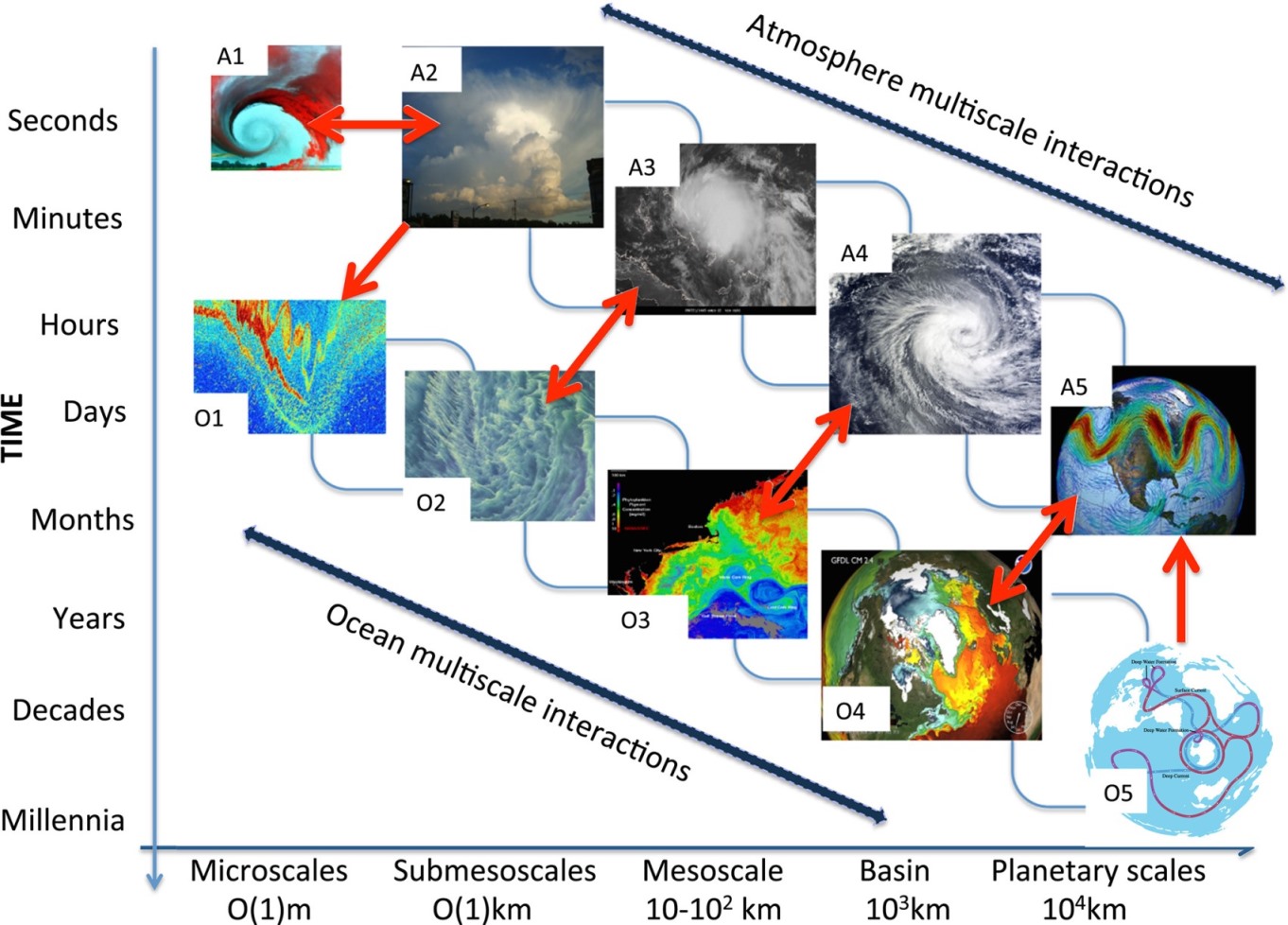Enabling Regional to Local Predictions in Support of Reliable Climate Information is key in the Post COP21 World of Transient Climate Change

Figure 1. Multiscale processes and scale interaction mechanisms in the atmosphere and ocean that need to be properly represented or parameterized in climate projections to improve regional to local climate information.
During recent decades, through theoretical considerations and analyses of observations and model simulations, the scientific community has fundamentally advanced our understanding of the coupled climate system, thereby establishing that humans affect the Earth's climate. Building on this accomplishment, the COP21 agreement marks a historic turning point for climate research by calling for actionable regional climate change information on time scales from seasonal to centuries. Out of the underlying United National Framework Convention on climate Change process, improving seamless regional climate forecast capabilities emerges as a closely linked challenge for the international research community. Addressing this challenge requires a multiscale approach to climate predictions.
In this work, scientists form the CLIVAR community offer their vision for an approach that emphasizes enhanced scientific understanding of regional to local climate processes as the foundation for progress (Stammer et al., 2018). The scientific challenge is extreme due to the rich complexity of interactions and feedbacks between regional and global processes, each of which affects the global climate trajectory. Technical development, international coordination, and a close interaction between the science and stakeholder communities are also required.
Figure 1 shows the processes acting separately in the atmosphere and ocean as well as their coupling mechanisms leading to coupled dynamical modes of variability. Panels in figure 1 labeled A1 to A5 represent atmospheric microscale turbulence, cumulus convection, cloud clusters, cyclones, and planetary waves, respectively. Panels labeled O1 to O5 represent ocean internal waves and mixing, submesoscale turbulence, mesoscale circulation, basin scale circulation, and the global overturning ocean circu- lation, respectively. The atmosphere and ocean are taken as examples, recognizing similar cross-scale interactions operating in the cryosphere and land. Moreover, in the figure only dynamical phenomena are considered, and not chemical and biological interactions and they are structured in a traditional manner, according to their spatial scales. Phenomena listed are examples for response units. These units have different spatial scales (in length) when atmosphere or ocean or land or inner-Earth processes and systems are considered since they have different inertia/damping/memory/carrying characteristics
The details of the study are available at https://agupubs.onlinelibrary.wiley.com/doi/full/10.1029/2018EF000979
(Summary written by L. Yin and A. Bracco)
**************************************************************************************************************************************************************************************
Science Directions in a Post COP21 World of Transient Climate Change: Enabling Regional to Local Predictions in Support of Reliable Climate Information
D. Stammer1 , A. Bracco2 , P. Braconnot3, G. P. Brasseur 4,5, S. M. Griffies6, E. Hawkins7
1 Centrum für Erdsystem Forschung und Nachhaltigkeit, Universität Hamburg, Hamburg, Germany,
2 School of Earth and Atmospheric Sciences, Georgia Institute of Technology, Atlanta, GA, USA,
3 Laboratoire des Sciences du Climat et del’ Environnement, unité mixte CEA-CNRS-UVSQ, Université Paris Saclay, Gif sur Yvette Cedex, France,
4 Max Planck Institute for Meteorology, Hamburg, Germany,
5 National Center for Atmospheric Research, Boulder, CO, USA,
6 NOAA Geophysical Fluid Dynamics Lab and Princeton University Atmospheric and Oceanic Sciences Program, Princeton, NJ, USA,
7 National Centre for Atmospheric Science, Department of Meteorology, University of Reading, Reading, UK














Add new comment